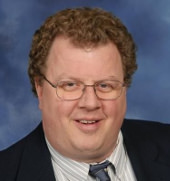God’s Word for You
Zechariah 2:1-2 A measuring line
by Pastor Timothy Smith on Tuesday, June 21, 2022
The Third Vision
2 And I lifted my eyes and looked—and there before me was a man with a measuring line in his hand. 2 I asked, “Where are you going?” And he said to me, “To measure Jerusalem, to see what its width is, and what its length is.”
This third vision is about someone with a measuring line. This is the same word for a measuring line once used by David in his wars (chevel, 2 Samuel 8:2). A longer kind of line (qav) was often used for marking off very long distances, such as between mountains (Jeremiah 31:39), or the diameter or circumference of the entire world (Job 38:4). The other kind (qav) was used in chapter 1, “And a measuring line will be stretched out over Jerusalem” (1:16). There doesn’t seem to be any important difference or special meaning as far as this vision goes.
This chapter is about spiritual Jerusalem, the kingdom of Christ. This will become clear as we read about the Lord himself being “a wall of fire around it” (verse 5) and the Lord coming and living among his people (verse 10) and so on. The second part of this chapter is an explanation of the vision given in much the same way that Jesus would speak a parable and then explain it later to his disciples when they were in private.
Zechariah sees a man, perhaps an angel, with a long measuring line, and he asks him where he is going. Obviously the man was walking somewhere, striding along with a purpose, and the prophet called out to him when he saw him. The reply keeps us in the context of the city of Jerusalem, which is where we’ve been so far in the series of visions. This will be the measurement of the city, or so it would seem, its width and its length. Those things were surely already known to the prophet and to many others. Nehemiah had ridden all around the walls at night to inspect the city’s defenses (or lack of them, Nehemiah 2:13-15). Since this is so certainly true, what was the point of the measuring line? It can only have been a different kind of measurement: The spiritual Jerusalem, which is not the physical city at all. Today the people of Israel are still confused about this meaning in the Scriptures. For many of them, salvation itself is seen to be geographic and not divine at all. They look to the land of Israel as their savior, that is, the soil and streams and stones between the Mediterranean coast and the ditch of the Jordan, from the well of Beersheba in the south to the springs of the Jordan north of the Sea of Galilee. The great newspaper of the nation is called Haaretz, which is ha-aretz, “the Land,” as when the Lord said to Joshua, “Get ready to cross the Jordan River into the land I am about to give you” (Joshua 1:2), but also in the prophetic warning about rejecting John the Baptist’s testimony about Christ when he also said: “He will turn the hearts of the fathers to their children, or else I will come and strike the land with a curse” (Malachi 4:6).
But the true Israel, the one in this prophecy, is the Kingdom of God, the holy Christian church. It cannot be measured with a yardstick or a meter stick, but only with God’s measure of faith. Only faith saves, and only unbelief condemns. Jesus said: “Whoever believes and is baptized will be saved, but whoever does not believe will be condemned” (Mark 16:16). And the church’s location? The true church is of course invisible, as the Apostles said: “Lord, you alone know everyone’s heart” (Acts 1:24).
The true Church exists wherever the means of grace are being used properly. The church is begotten from the means of grace (the gospel in word and sacrament), and the church is sustained through the means of grace. But the means of grace are not themselves the church any more than the air that we breathe and the water that we drink are human beings. No, the means of grace are, properly speaking, the marks of the church: Where the gospel is preached in all its truth and in all its purity, where new believers are baptized, and mature believers receive the Lord’s Supper regularly to strengthen their faith through the forgiveness of sins—there is the church, whether there are two or two hundred or perhaps even two thousand.
For the preaching of the gospel is the seed of the kingdom, as the Lord told the prophet: “My word that goes out from my mouth is seed for the kingdom” (Isaiah 55:10). And Jesus said: “Whoever believes and is baptized will be saved” (Mark 16:16). And again, about the Lord’s Supper: “Whenever you eat this bread and drink this cup, you proclaim the Lord’s death until he comes,” that is, we proclaim the crucifixion of the Son of God for the forgiveness of our sins (1 Corinthians 11:25). There are the marks of the church. And their extent is into every heart that believes, in every land, in every language, in every century. The true church may not seem very large in any one place, but God’s will is not that his church will be enormous, but only that it will be faithful. Our faithfulness is the measure of our faith, and the measuring line is God’s standard, not ours. “Be faithful,” Jesus said, “and I will give you the crown of life.”
In Christ,
Pastor Timothy Smith





